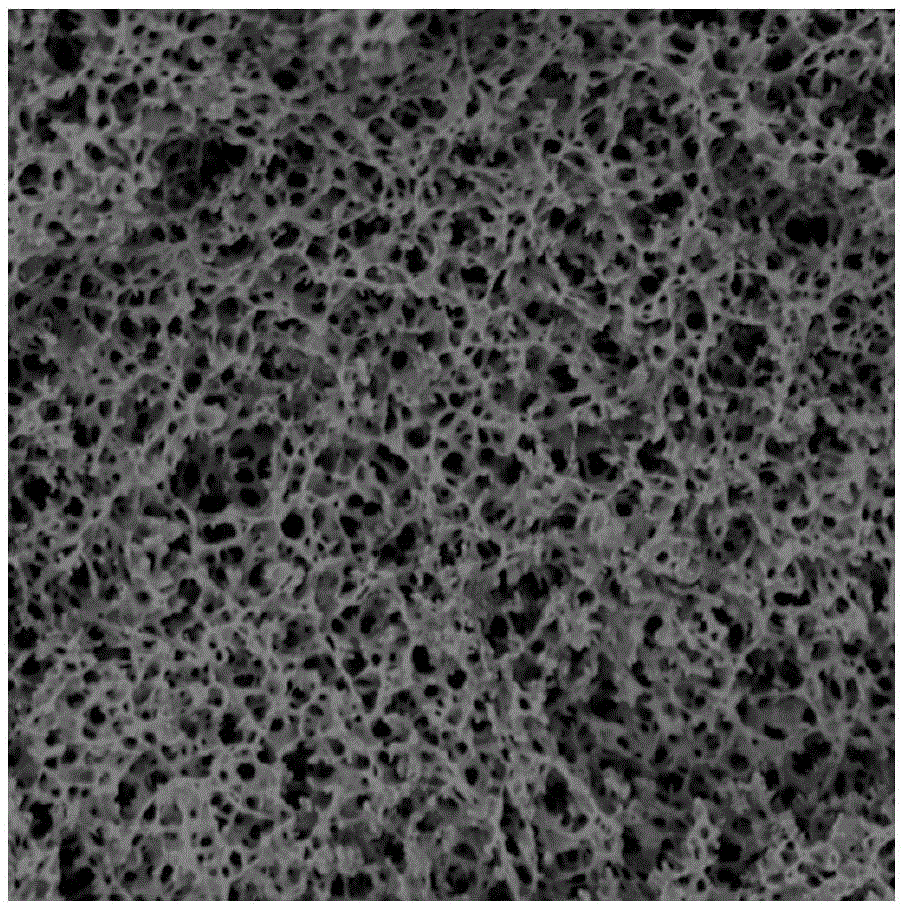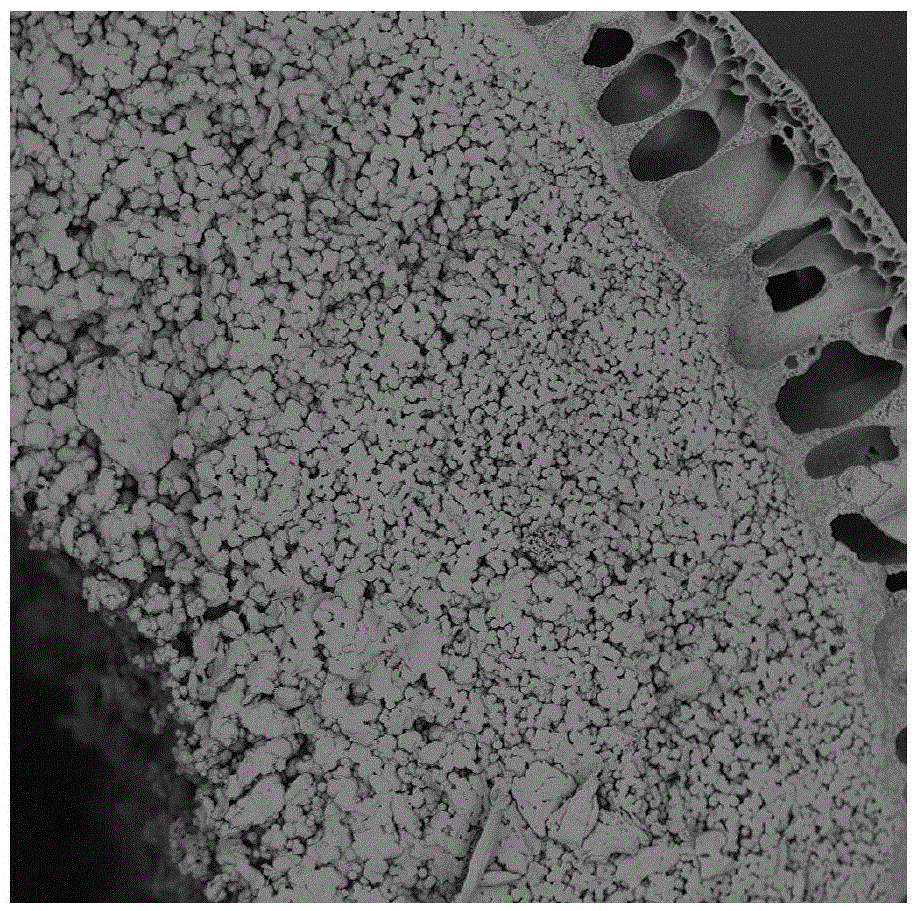Preparation method of polymer hollow fiber membrane
A polymer membrane, polymer technology, used in chemical instruments and methods, membrane technology, semi-permeable membrane separation, etc., can solve the problems of difficult to control the degree of crystallization, reduced pressure resistance, reduced permeability, etc., and achieves a wide range of choices. , High-strength permeability, strong applicability
- Summary
- Abstract
- Description
- Claims
- Application Information
AI Technical Summary
Problems solved by technology
Method used
Image
Examples
Embodiment 1
[0031] A kind of polyvinylidene fluoride (PVDF) hollow fiber membrane, each raw material is calculated by mass percentage, and its preparation method comprises the following steps:
[0032]Step 1: Mix 20% polyvinylidene fluoride, 6% polyethylene glycol, 2% polyvinyl pyrrolidone, 2% ethylene oxide-propylene oxide-ethylene oxide triblock copolymer and 70% N,N-di Methyl acetamide is added into the batching tank (the additive is composed of polyethylene glycol, polyvinylpyrrolidone and ethylene oxide-propylene oxide-ethylene oxide triblock copolymer), stirred at 100°C to fully dissolve, Static defoaming, to obtain the casting solution;
[0033] Step 2: Co-extrude the casting solution obtained in step 1 with glycerol (low temperature core liquid) at a temperature of 5°C through a spinneret, and immerse in glycerol at a temperature of 5°C (low temperature coagulation bath) to form a gel The membrane blank is quickly immersed in pure water (high-temperature coagulation bath) at a te...
Embodiment 2
[0037] A kind of polyvinylidene fluoride (PVDF) hollow fiber membrane, each raw material is calculated by mass percentage, and its preparation method comprises the following steps:
[0038] Step 1: Mix 20% polyvinylidene fluoride, 6% polyethylene glycol, 2% alkylphenol polyoxyethylene ether, 2% ethylene oxide-propylene oxide-ethylene oxide triblock copolymer and 70% two Add methyl sulfoxide into the batching tank (the additive is composed of polyethylene glycol, alkylphenol polyoxyethylene ether and ethylene oxide-propylene oxide-ethylene oxide triblock copolymer), and stir well at 110°C Dissolving, standing for defoaming to obtain casting solution;
[0039] Step 2: Co-extrude the casting solution obtained in step 1 with isopropanol (low temperature core fluid) at 20°C through a spinneret, and immerse in isopropanol (low temperature coagulation bath) at 20°C to form a gel Membrane embryos are then quickly immersed in a high-temperature coagulation bath composed of 30% pure wa...
Embodiment 3
[0043] A kind of polyvinylidene fluoride (PVDF) hollow fiber membrane, each raw material is calculated by mass percentage, and its preparation method comprises the following steps:
[0044] Step 1: 35% polyvinylidene fluoride, 10% polyethylene glycol, 5% glycerin, 5% silicone oil and 45% N,N-dimethylformamide are added in the batching tank (by polyethylene glycol, glycerin and Silicone oil constitutes an additive), fully stirred and dissolved at 150°C, left to stand for defoaming, and obtained a casting solution;
[0045] Step 2: Co-extrude the casting liquid obtained in step 1 with liquid paraffin (low temperature core liquid) at a temperature of 5°C through a spinneret, and immerse in liquid paraffin (low temperature coagulation bath) at a temperature of 5°C to form a gel film blank , and then quickly immersed in a high-temperature coagulation bath composed of 50% pure water and 50% N,N-dimethylformamide at a temperature of 80°C for curing and molding to obtain a nascent PVD...
PUM
 Login to View More
Login to View More Abstract
Description
Claims
Application Information
 Login to View More
Login to View More - R&D
- Intellectual Property
- Life Sciences
- Materials
- Tech Scout
- Unparalleled Data Quality
- Higher Quality Content
- 60% Fewer Hallucinations
Browse by: Latest US Patents, China's latest patents, Technical Efficacy Thesaurus, Application Domain, Technology Topic, Popular Technical Reports.
© 2025 PatSnap. All rights reserved.Legal|Privacy policy|Modern Slavery Act Transparency Statement|Sitemap|About US| Contact US: help@patsnap.com



